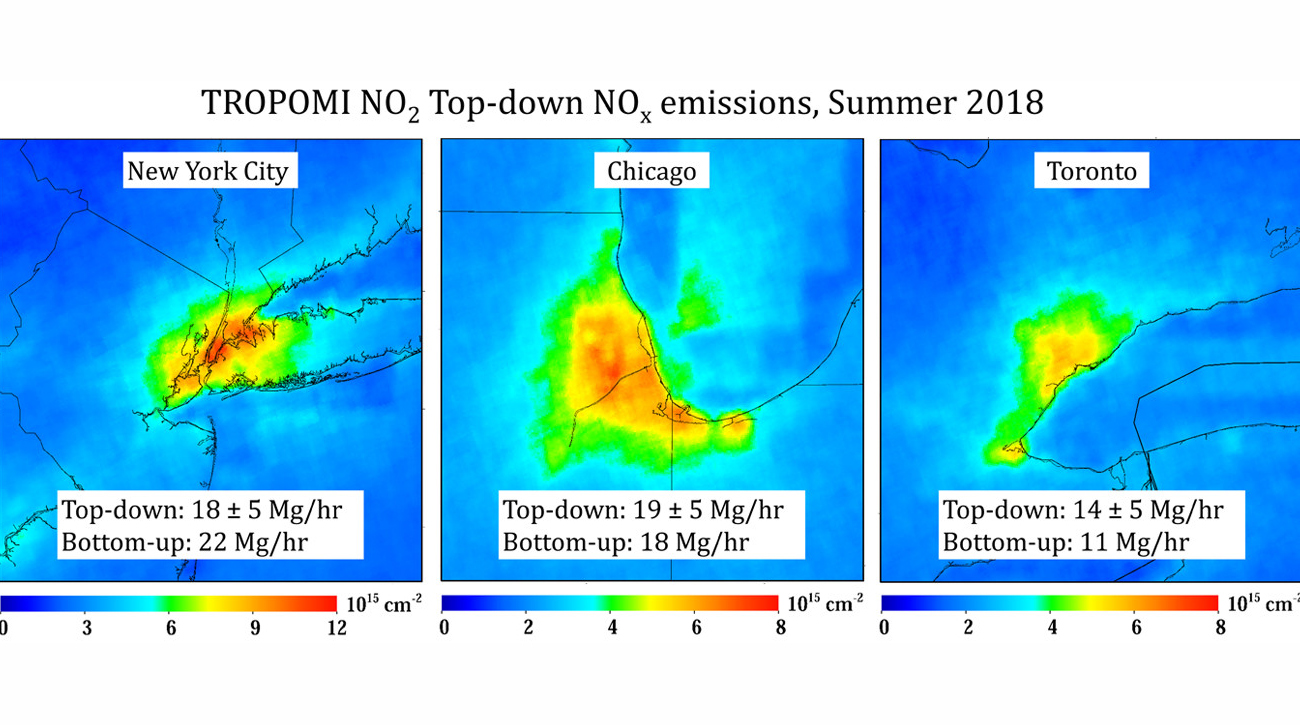Using a new satellite instrument, a multicenter research team was able to estimate emissions of nitrogen oxides (NOx) using a single day’s worth of data compared to older methods which required months or years of measurements to quantify these pollutants at the city-scale resolution. The study, which was published Oct. 11, is the first to use the newly launched satellite instrument, TROPOMI, to estimate NOx emissions in the United States.
Nitrogen oxides or NOx are gaseous air pollutants produced during fossil fuel combustion. NO2, which comprises the majority of NOx, is linked to the development of asthma, a chronic condition that can cause intermittent attacks of wheezing and difficulty breathing.
Daniel Goldberg, PhD, who is now a research scientist at the George Washington University Milken Institute School of Public Health, is the lead and corresponding author for the new study. He did the work while at the U.S. Department of Energy’s Argonne National Laboratory and the Consortium for Advanced Science and Engineering at the University of Chicago.
In this study, Goldberg and his colleagues used the new method to estimate the NOx emissions connected to two power plants and three large North American cities. The team found:
- The NOx emissions estimated by the new method agree to within 10 percent of the known emissions reported for the power plants, a finding that suggest the new method is accurate.
- The new method suggests that the U.S. Environmental Protection Agency overestimates NOx emissions in New York City by approximately 22 percent and underestimates these emissions in Chicago by 5 percent.
- The Canadian government appears to underestimate the NOx pollution in Toronto by 21 percent.
- The new satellite method can quantify differences between increased pollution on weekdays and decreased emissions during weekends.
The new study suggests that researchers will be able to use the new satellite instrument to better quantify pollution in areas without monitors or from sources that have a variable emission pattern, such as the pollutants released by wildfires burning in remote areas.
The study, Enhanced Capabilities of TROPOMI NO2: Estimating NOX from North American Cities and Power Plants, was published online Oct. 11 in the journal Environmental Science & Technology.


